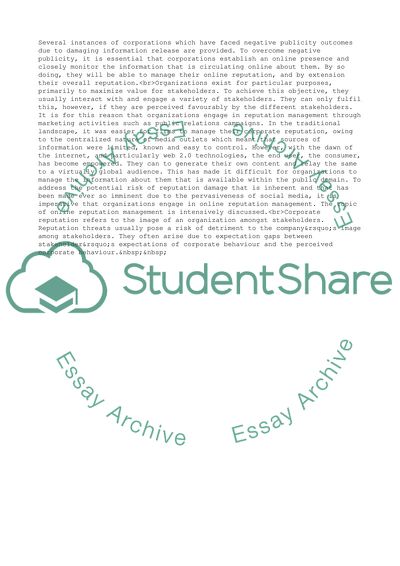Cite this document
(Online Reputation Management Assignment Example | Topics and Well Written Essays - 2500 words, n.d.)
Online Reputation Management Assignment Example | Topics and Well Written Essays - 2500 words. Retrieved from https://studentshare.org/management/1880002-management-information-system-mis-online-reputation-management
Online Reputation Management Assignment Example | Topics and Well Written Essays - 2500 words. Retrieved from https://studentshare.org/management/1880002-management-information-system-mis-online-reputation-management
(Online Reputation Management Assignment Example | Topics and Well Written Essays - 2500 Words)
Online Reputation Management Assignment Example | Topics and Well Written Essays - 2500 Words. https://studentshare.org/management/1880002-management-information-system-mis-online-reputation-management.
Online Reputation Management Assignment Example | Topics and Well Written Essays - 2500 Words. https://studentshare.org/management/1880002-management-information-system-mis-online-reputation-management.
“Online Reputation Management Assignment Example | Topics and Well Written Essays - 2500 Words”, n.d. https://studentshare.org/management/1880002-management-information-system-mis-online-reputation-management.


